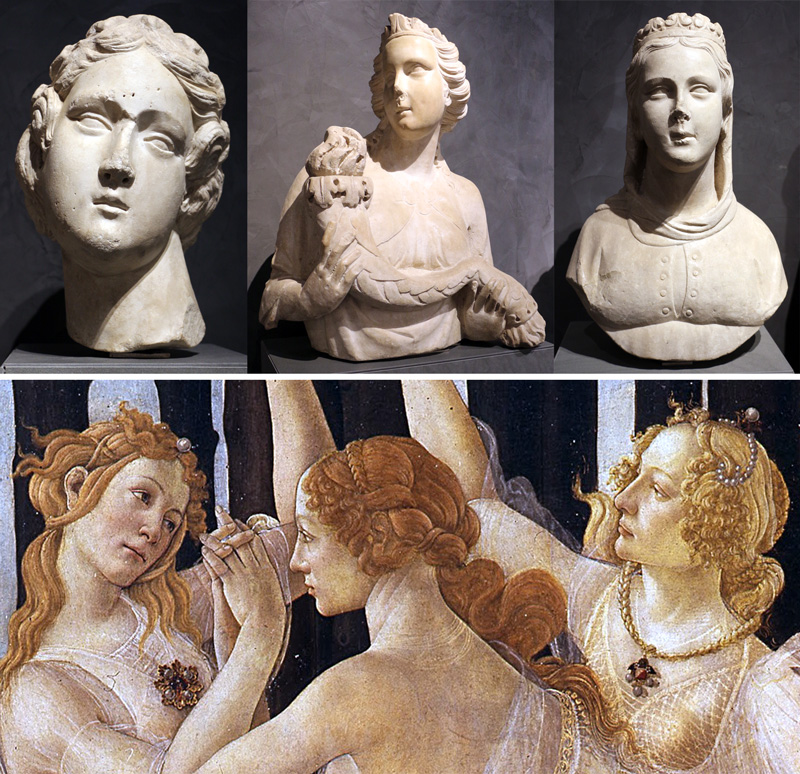Before the turn of the 15th century, a marble sculpture of the Three Graces representing the Three Theological Virtues – Faith, Hope and Love – stood above one of the three doors of the Florence Baptistery dedicated to the biblical prophet John the Baptist. Two sets of triads placed above the other doors depicted the Baptism of Christ and the Preaching of the Baptist. All were sculpted by Tino di Camaino (c.1280 – c.1337) but eventually replaced at the beginning of the 16th century with works by other artists.
Fragments of Tino di Camaino’s Theological Virtues are preserved at the Museo del Duomo in Florence. Two of the fragments, and perhaps even a third, can be linked to Botticelli’s Primavera and the group referred to as the Three Graces.

The inclined head identified by the Museo del Duomo as La Speranza (Hope) can be paired with the head of the figure on the left of the group, Fioretta Gorini. The bust of La Carità (Charity or Love) holding the cornucopia, the “horn of plenty” and a symbol of abundance, is identified with the central figure, Lucrezia Donati. Her head is turned sideways as in the fragment, and the “horn of plenty” is represented by her golden horn hairstyle as explained at this link.

The theme of horns is also featured in the interlocking hands of Fioretta Gorini and Simonetta Vespucci, the third figure in the group, raised high above the head of Lucrezia Donati, possibly suggesting they were rivals for the attention of Giuliano de’ Medici, represented in the figure to the left of the group.
As to the remaining fragment known as La Fede (Faith), there are no obvious features that could be said to match Botticelli’s third figure of Virtue represented by Simonetta Vespucci who is also mirrored in the painting as the figure of Flora distributing flowers.

I suspect Botticelli sourced another sculpture to make a connection to Simonetta and I’ll present my view on this in a future post.
In the meantime, compare the raised arm of Simonetta and the inclined and turned heads of Fioretta and Lucrezia with the heads of the two angels and John’s raised arm in Andrea del Vercocchio’s painting of the Baptism of Christ.


You must be logged in to post a comment.